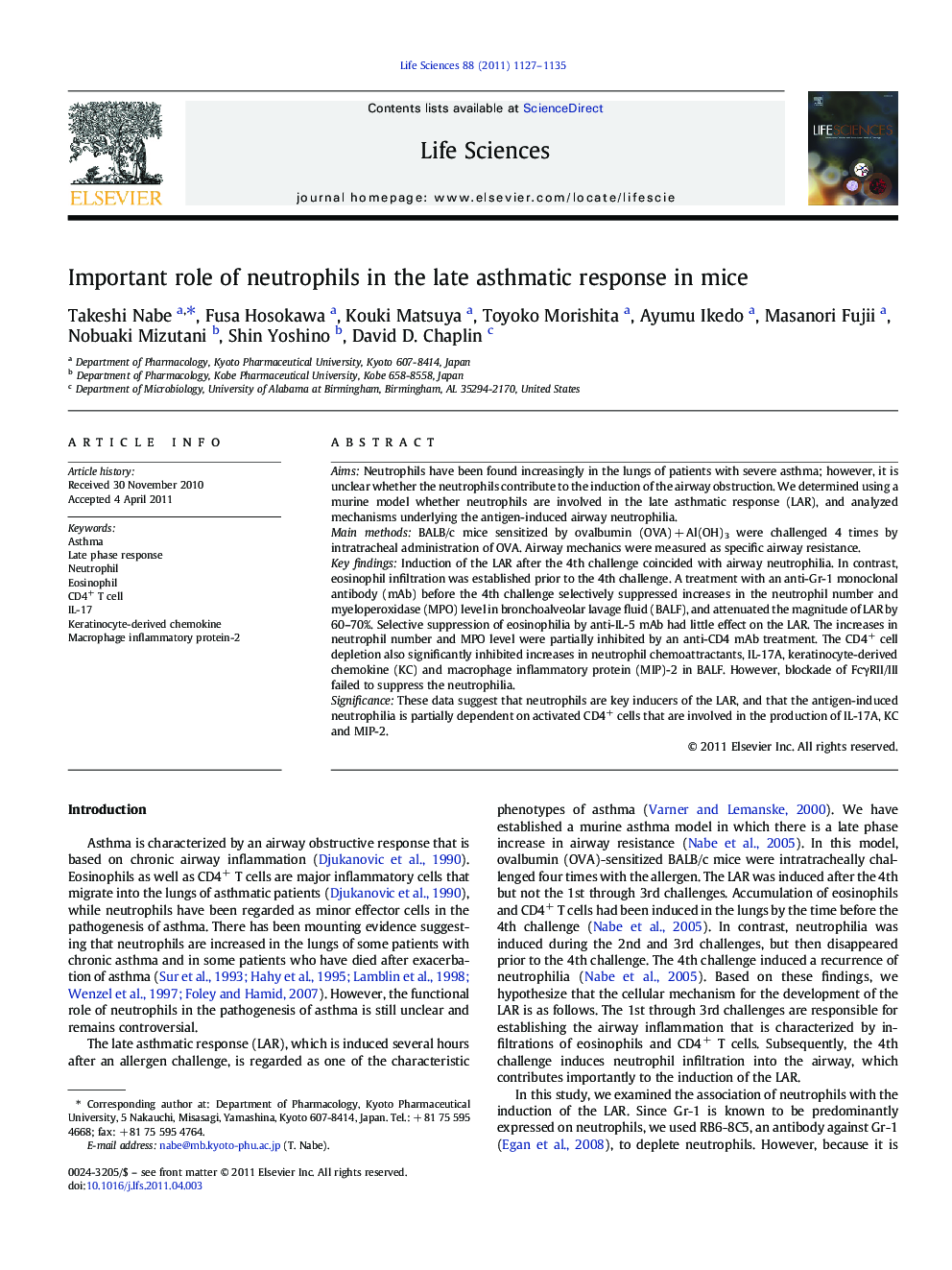| Article ID | Journal | Published Year | Pages | File Type |
|---|---|---|---|---|
| 2551909 | Life Sciences | 2011 | 9 Pages |
AimsNeutrophils have been found increasingly in the lungs of patients with severe asthma; however, it is unclear whether the neutrophils contribute to the induction of the airway obstruction. We determined using a murine model whether neutrophils are involved in the late asthmatic response (LAR), and analyzed mechanisms underlying the antigen-induced airway neutrophilia.Main methodsBALB/c mice sensitized by ovalbumin (OVA) + Al(OH)3 were challenged 4 times by intratracheal administration of OVA. Airway mechanics were measured as specific airway resistance.Key findingsInduction of the LAR after the 4th challenge coincided with airway neutrophilia. In contrast, eosinophil infiltration was established prior to the 4th challenge. A treatment with an anti-Gr-1 monoclonal antibody (mAb) before the 4th challenge selectively suppressed increases in the neutrophil number and myeloperoxidase (MPO) level in bronchoalveolar lavage fluid (BALF), and attenuated the magnitude of LAR by 60–70%. Selective suppression of eosinophilia by anti-IL-5 mAb had little effect on the LAR. The increases in neutrophil number and MPO level were partially inhibited by an anti-CD4 mAb treatment. The CD4+ cell depletion also significantly inhibited increases in neutrophil chemoattractants, IL-17A, keratinocyte-derived chemokine (KC) and macrophage inflammatory protein (MIP)-2 in BALF. However, blockade of FcγRII/III failed to suppress the neutrophilia.SignificanceThese data suggest that neutrophils are key inducers of the LAR, and that the antigen-induced neutrophilia is partially dependent on activated CD4+ cells that are involved in the production of IL-17A, KC and MIP-2.
